Indiana is home to quite a few rockhounding locations which offer the opportunity to collect many interesting rocks and minerals. The geology of the state is completely dominated by sedimentary rocks. This uniformity of exposed surface rocks means that the state is relatively lacking when it comes to the variety of collectible material available. Fortunately, the rocks and minerals which are exposed are available in abundance. If you know where to look, you can find a nice selection of rocks including geodes, quartz, agate, jasper, and petrified wood.
The best places to rockhound in Indiana are stream gravels in the central and southern parts of the state. You can also find rocks and minerals in quarries, mining dumps, and glacial drifts all across the state. Gold and the occasional diamond have been found in placer deposits in Indiana streams.
| State Symbols | |
|---|---|
| State Mineral | — |
| State Rock | Salem Limestone |
| State Gemstone | — |
| State Fossil | Crinoid (unofficial) |
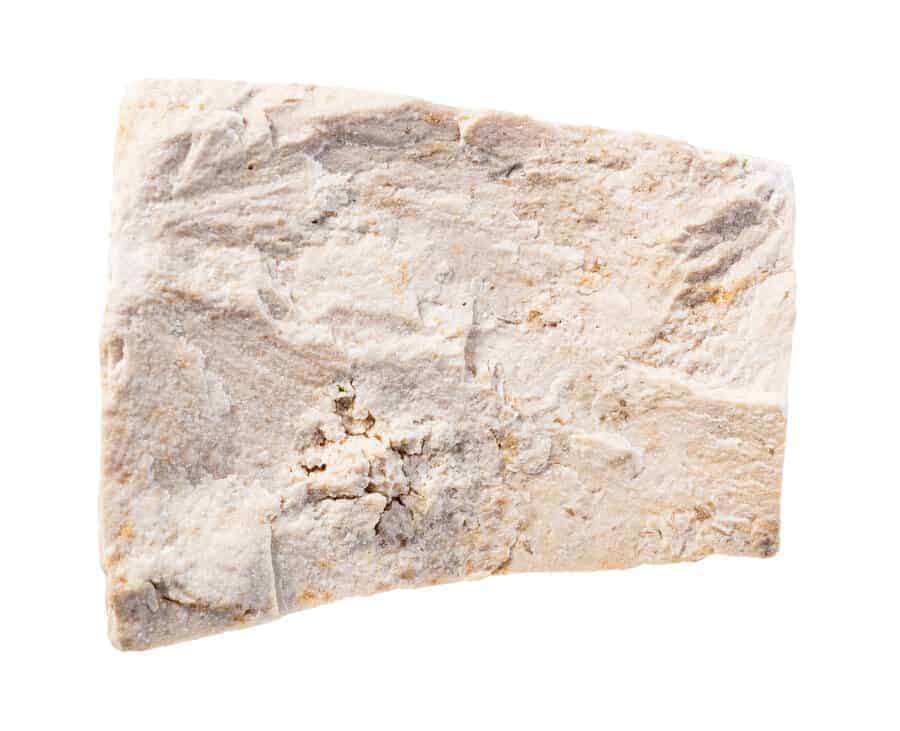
This article will dive deeper into the many great rockhounding sites across the state (along with maps), but I’d like to highlight a few standouts here. The top 10 rockhounding sites for rocks and minerals in Indiana:
- Fort Wayne – Agate, Jasper, Petrified wood
- Huntington – Calcite, Pyrite, Geodes, Sphalerite
- Erie – Geodes
- Brown County – Corundum, Quartz, Topaz, Diamond
- Beanblossom Creek – Geodes with quartz crystals
- Indianapolis – Amethyst, Moonstone, Quartz
- Morgan County – Quartz, Corundum, Topaz, Diamond
- Parke County – Goethite, Pyrite, Selenite
- Lawrence County – Geodes with varied crystals
- Salt Creek – Geodes with quartz crystals
Indiana is, unfortunately, a bit lacking when it comes to the diversity of rocks and minerals available for collecting. The entirety of the surface is comprised of sedimentary rocks, which means there are very few opportunities to find or collect interesting pegmatite minerals. Still, there are quite a few rocks and minerals that rockhounds will certainly consider a handsome reward for their efforts. Carbonates and quartz-family minerals abound, and there are plenty of places to find geodes which can contain several mineral varieties.
The most commonly found and collected rocks and minerals in Indiana are:
- Agate
- Jasper
- Petrified wood
- Calcite
- Pyrite
- Quartz
- Geodes
- Dolomite
- Celestite
- Fluorite
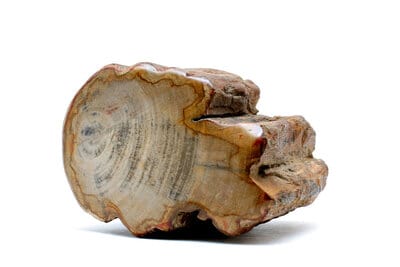
If you’ve already found a rock and you’re not sure what it is, I would highly recommend checking out my Practical Rock Identification System. This bundle of information includes a book, videos, and online tools. It is, simply put, the most comprehensive and easy-to-understand rock identification system you’ll find anywhere.
You can also read through my free rock identification guide and mineral identification guide which are filled with useful information and tools.
Through quite a bit of research and cross-referencing of available literature, I have compiled this list of some prospective locations in Indiana which I would recommend to people looking to do some rockhounding. These are mostly comprised of old mining prospects, washes, streams, and historically known rock and mineral collecting sites. For additional reading, I’d highly recommend these books you can find on Amazon:
Please remember that rock collecting locations are constantly changing. Specimens may become depleted from other collectors, the location may have been built on or altered, locality information in literature may be inaccurate, and property ownership may have changed hands. Joining up with a local rockhounding club for a group trip can often get you access to otherwise off-limits locations like privately owned mines and quarries. There are many rockhounding clubs in Indiana so you can most likely find one you like nearby.
Though there are many locations listed here, this list is far from exhaustive. A location’s listing here is not a guarantee of accuracy. Be safe, never go underground, and make sure to get permission from the landowner to search for and collect specimens.
If you’re planning on heading to the field, make sure you have all the gear you’ll need! To get started, you can check out my recommended gear page which contains my full reviews for every Geologist’s favorite rock hammer and the best hiking backpack I’ve ever owned.
Rockhounding Sites in Indiana
Important Disclaimer: I have not been to these locations myself, and I do not know if they are currently open for collecting. Use this resource as a guide to get you started. Follow posted signage and always get permission from the landowner to collect.
Northern Indiana Rockhounding Sites
Northern Indiana rockhounding locations are relatively sparse, but that doesn’t mean there aren’t plenty of places to search. The finds in this area are mostly going to be quartz-family minerals like agate, jasper, and petrified wood, but some locations may contain specimens of calcite, marcasite, pyrite, and even some small geodes. The best place to rockhound in northern Indiana is Fort Wayne, particularly in the gravels of the Maumee River and any recently tilled fields which may contain freshly exposed agates and jaspers.
| Location | Rocks & Minerals |
|---|---|
| Fort Wayne, in area farms and fields | Agate, Jasper |
| Maumee River, in gravels near Fort Wayne | Agate, Jasper, Fossilized coral, Petrified wood |
| Logansport, area quarries | Apatite, Calcite crystals, Pyrite, Quartz |
| Huntington, quarries and outcrops to E | Calcite, Marcasite, Pyrite, Quartz geodes (small), Sphalerite |
| Erie, area stream gravels, outcrops, etc. | Geodes |
| Bluffton, in quarry to N | Dolomite, Marcasite, Pyrite |
Central Indiana Rockhounding Sites
Central Indiana is the best part of the state for rockhounding, both for the number of prospective locations and the variety of specimens that may be found. Many quarries and road cuts in the area are known to contain interesting mineral varieties including fluorescent calcite, fluorite, dolomite, and celestite, and some of the local creeks and streams can be panned for gold. Perhaps even more interesting are the geodes which can be found in several locations including Beanblossom and Trevlac.
Southern Indiana Rockhounding Sites
Southern Indiana is an interesting area for rockhounding. There are many cave formations open to the public with are definitely worth checking out even though collecting isn’t allowed. Quarries in the region have long produced specimens of carbonate minerals like calcite, dolomite, and celestite. Any rockhound looking to do some collecting in southern Indiana will want to search for geodes in Lawrence County and the towns of Bedford and Heltonville.
| Location | Rocks & Minerals |
|---|---|
| Marengo Cave (no collecting) | Aragonite, Calcite, Travertine, Hydromagnesite |
| Wyandotte Caves (no collecting) | Calcite, Alabaster, Flint, Epsomite |
| Weisburg, area road cuts and outcrops | Trilobites |
| Coryden, area quarries | Calcite, Fluorite, Dolomite (pink crystals), Quartz |
| Bicknell, area coal mines | Marcasite, Pyrite |
| Lawrence County, all regional streams and gravels | Geodes (quartz, calcite, sphalerite, limonite, celestite, fluorite, etc.) |
| Oolitic, in limestone exposures | Oolitic limestone |
| Bedford, area gravels to the E | Geodes |
| Buddha, 2 mi. SE in abandoned quarry near railroad | Barite, Calcite, Celestite, Gypsum, Strontianite |
| Georgia, area quarries and outcrops | Barite crystals, Dolomite, Strontianite |
| Salt Creek gravels, near Heltonville | Geodes (quartz crystals) |
| Coal Hollow, in outcrops | Siderite |
Where to Find Geodes in Indiana
Geodes are some of the most popular rocks sought by rockhounds all over the world, and Indiana is no exception. In fact, Indiana is a surprisingly good state for geode collecting thanks to the sedimentary rocks which cover the entirety of the state.
These geodes form in cavities in the rocks when mineral-laden water precipitates through the voids and leaves its minerals behind. Over time this slow deposition of various minerals causes the walls of the cavity to become lined with crystals. Most of the geodes found in Indiana will be lined with quartz, calcite, sphalerite, limonite, celestite, or fluorite.,
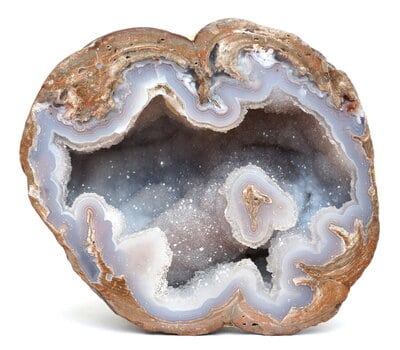
Tip: Not sure if the rock you’ve found is a geode? Check out my article about how to identify a geode.
While there are plenty of locations in Indiana where geodes can be found, you can’t find them just anywhere. You need to know exactly where to look – but don’t worry, I’ve got you covered!
The best places to find geodes in Indiana:
- Huntington – In quarries and outcrops to the east
- Erie – In local streams, gravels, and outcrops
- Beanblossom – In Beanblossom Creek
- Lawrence County – In streams and gravels
- Bedford – In streams and gravels to the east
- Heltonville – In the gravels of Salt Creek
Where to Find Crystals and Gemstones in Indiana
There is nothing quite like uncovering a quartz crystal with a perfect termination or finding a beautiful agate that has been waiting in a river bank for you to come along and take it home. Gemstones are some of the most enjoyable specimens that rockhounds can find, but it’s not always easy to know where to look.
Tip: Check out my Complete Rock Tumbling Guide to make your rocks and gemstones really shine!
Due to Indiana’s complete lack of any volcanic or metamorphic rocks exposed at the surface there are virtually no opportunities to find interesting pegmatite minerals, but that doesn’t mean there aren’t places to search for crystals and gemstones.
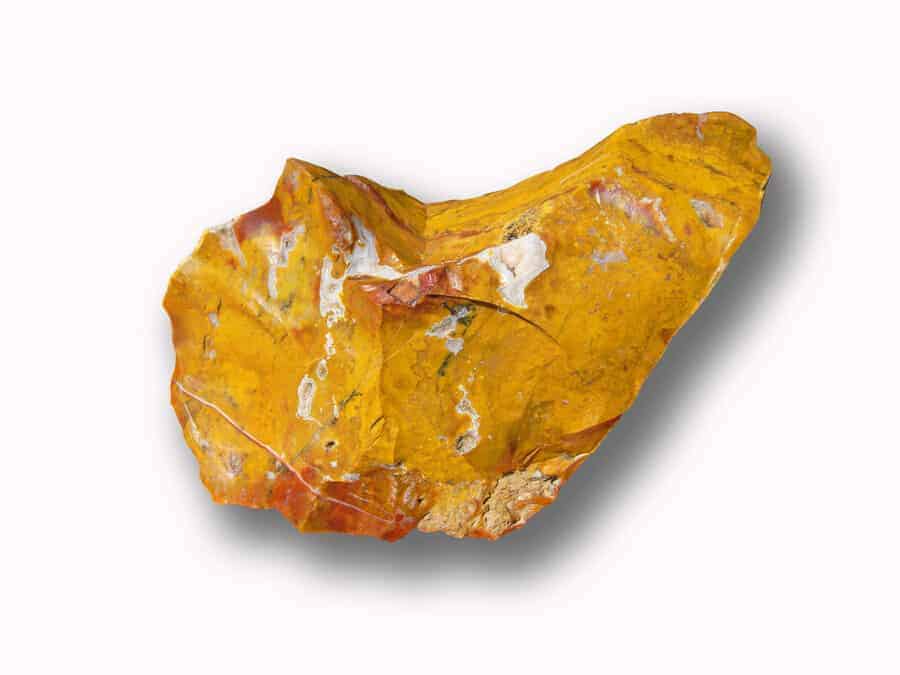
Minerals like calcite, quartz, and dolomite can be found in abundance, and there are plenty of places to search for fluorite and celestite. Exceptionally lucky rockhounds might even be able to find diamonds in regional stream beds. Semiprecious gemstones like agate, jasper, and petrified wood will be some of the most prolific and easy to find collectible rocks in Indiana.
The best places to find crystals and gemstones in Indiana are:
- Maumee River – Agate, Jasper, Petrified wood
- Logansport – Apatite, Calcite, Pyrite, Quartz
- Brown County – Corundum, Quartz, Topaz, Diamond
- Williams Creek – Amethyst, Quartz
- Morgan County – Corundum, Quartz, Topaz, Diamond
- Highland Creek – Sapphire (brown)
- Coryden – Calcite, Fluorite, Dolomite, Quartz
Where to Find Amethyst in Indiana
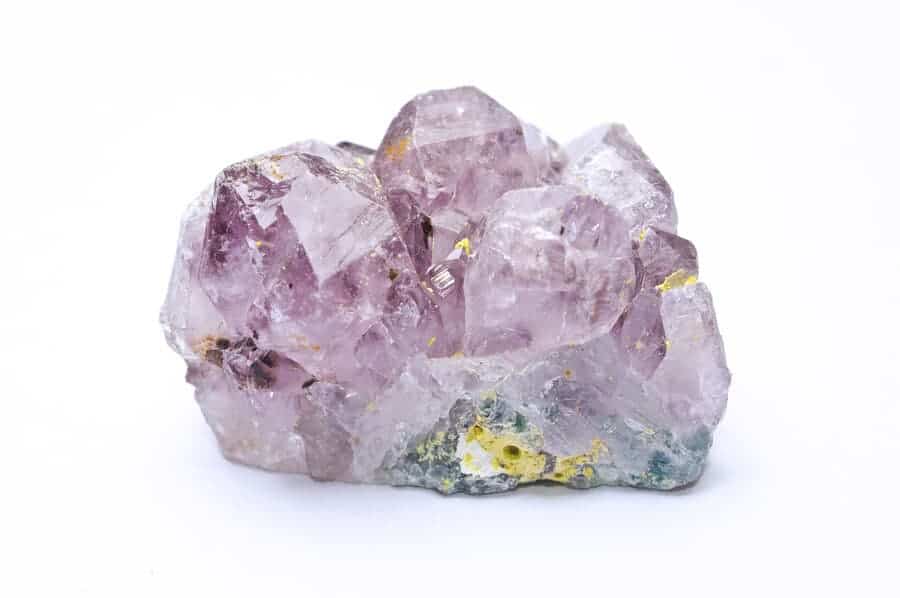
Amethyst’s distinct purple color and hexagonal crystal habit make it one of the most recognizable gemstones in the world, and it’s no wonder rockhounds seek it out with such enthusiasm. It isn’t easily found in Indiana but you aren’t without hope if you’re looking to collect some for yourself. The best place to find amethyst in Indiana is in Williams Creek, just north of Indianapolis. Try searching in the gravel bed and the banks of the creek.
Indiana Rockhounding Laws & Regulations
One of the most common questions rockhounds have is whether or not they are allowed to collect at a certain location. It is the responsibility of each rockhound to obtain permission from a landowner to search and/or collect on a piece of property.
The ownership and status of land can and does change frequently, making it impossible to document accurate information on this page. However, I have compiled a list of resources here so that you may investigate and obtain permission for any locations (found here or elsewhere) for yourself.
Public Land Resources
I have written entire articles which cover the rockhounding laws and regulations for nearly every type of public land you can think of. I encourage you to check them out if you are curious about the legalities of rock and mineral collecting.
- Rockhounding on Public Land: Laws and Regulations
- Can You Collect Rocks in State Parks? All 50 States Answered
To determine what type of public land a particular location is on, I would recommend starting with the Indiana Department of Natural Resources Interactive Maps.
Private Land Resources
As with most states, each county in Indiana will have records of who owns each piece of property. You can also usually get the landowner’s name and address by visiting the county records office. I would probably start by contacting the assessor in whatever county you’re interested in and getting whatever contact information you can for the landowner.
Sources & Further Reading
The locations and information contained in this article are primarily derived from academic papers, online resources, and other outside sources. If you would like to read some of the source material for yourself I have listed them below. The majority of these locations are my interpretation of Robert Beste’s A Location Guide for Rock Hounds in the United States. Other sources include:
